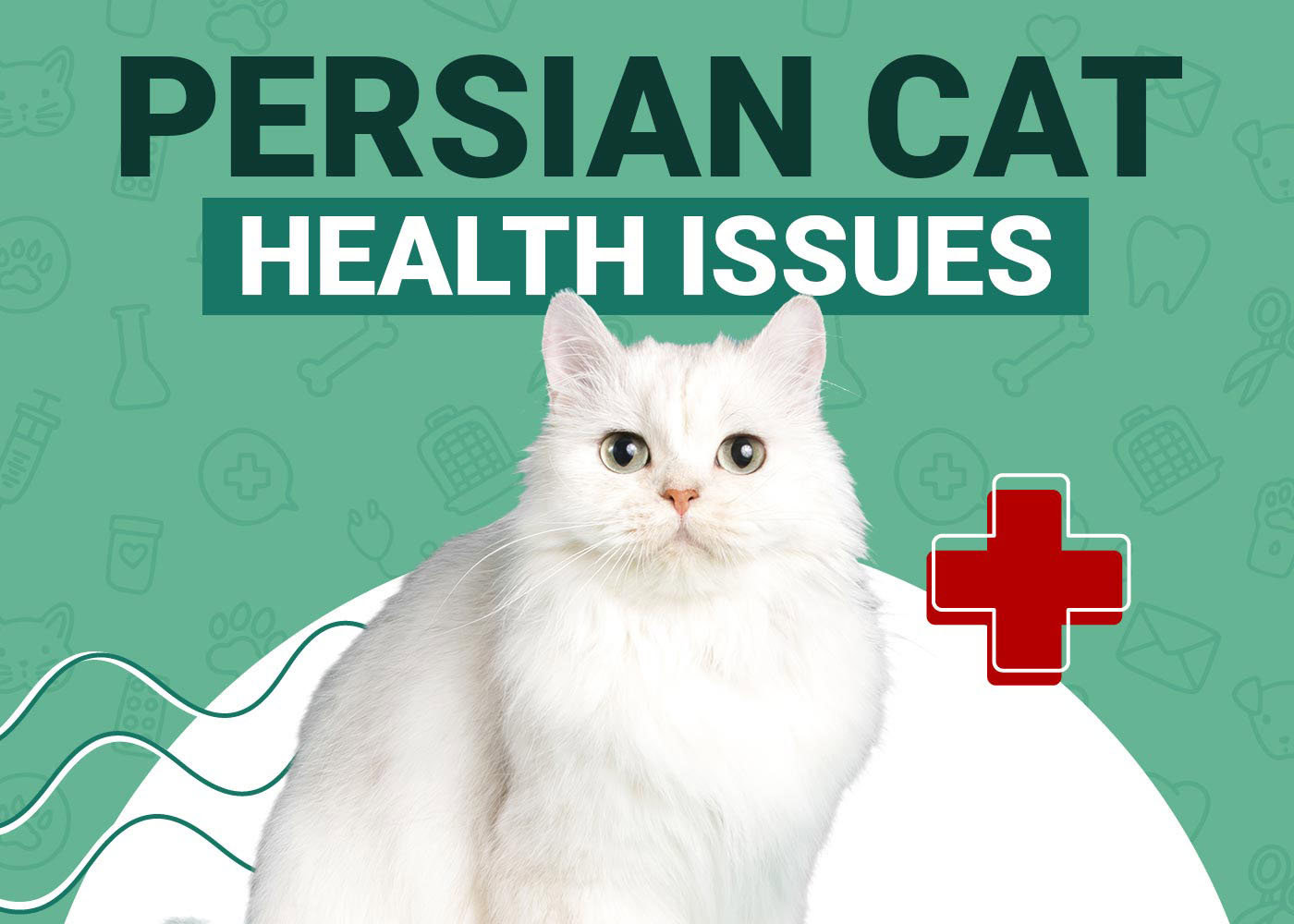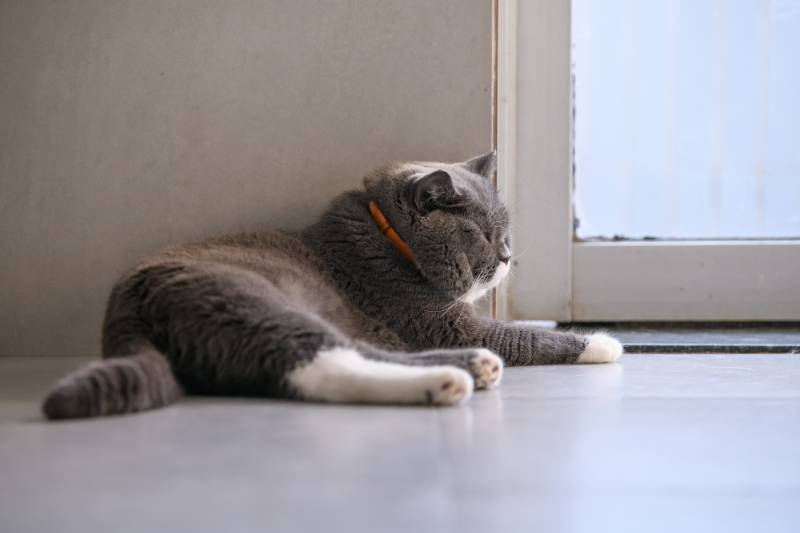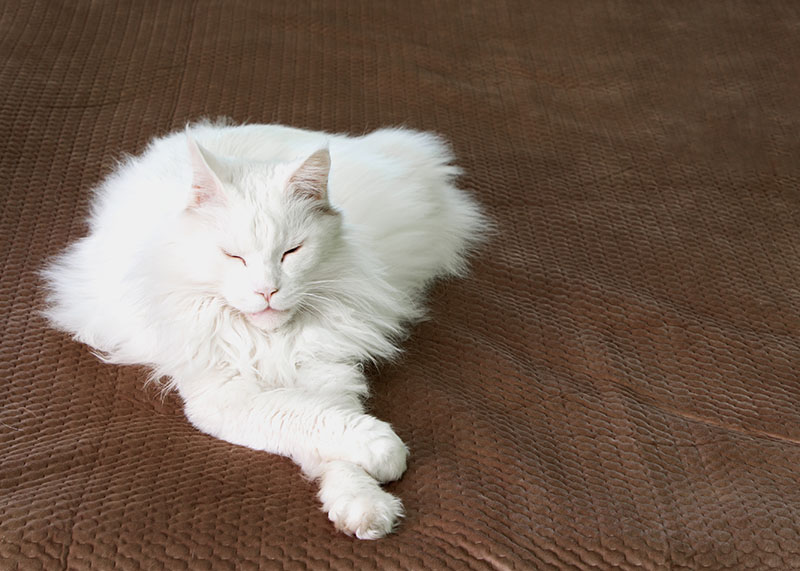VET APPROVED

The information is current and up-to-date in accordance with the latest veterinarian research.
Learn more »According to the Cat Fanciers’ Association (CFA), Persians are the third most popular purebred cat in the United States.1 Unfortunately, a 2019 research study in the U.K. found that about 65% of Persians surveyed had at least one documented health problem.2 In this article, we’ll list seven common Persian cat health concerns. We’ll also let you know what steps you can take to keep your Persian as healthy as possible.

The 7 Most Common Persian Cat Health Problems:
1. Brachycephalic Obstructive Airway Syndrome (BOAS)
| Signs | Noisy breathing, easily tired, collapse |
| Possible treatments | Surgery, medication, weight management |
Brachycephalic airway obstruction syndrome (BAOS) is common among flat-faced dog and cat breeds, including the Persian. Flat-faced animals have malformed skull bones, resulting in changes to the face and mouth structure. In the case of BAOS, those changes interfere with the cat’s normal breathing process.
Persians with BAOS may have several physical changes, such as a narrow external opening of the nose, narrow nasal passages, and long soft palate. These changes cause normal airflow into the cat’s lungs to be obstructed, hence the condition’s name. BOAS is usually diagnosed by a physical exam and what the owner can tell. Persians with BOAS may be mild to severely impacted. The severity of the disease will play a role in how it is treated.
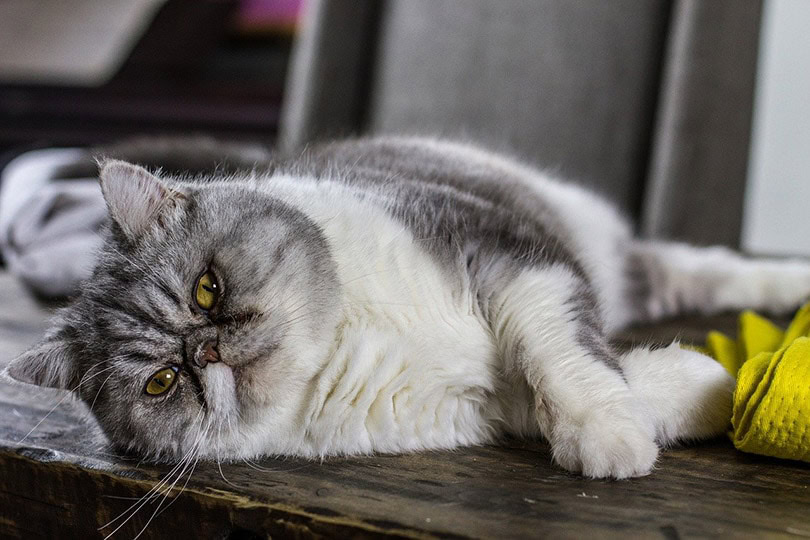
2. Hypertrophic Cardiomyopathy
| Signs | Trouble breathing, lethargy, loss of appetite, weak pulse, abnormal heart sound |
| Possible treatments | Medications |
Hypertrophic cardiomyopathy (HCM) is another common health concern for Persians. Cats with this condition have abnormally thick heart walls, which impacts the ability of the heart to pump blood. It is believed to have a genetic component because it is much more common in certain purebred cats, including Persians.
Some cats with HCM can go for years without displaying signs. Typically, signs only happen when the decreased blood circulation starts causing other issues, like heart failure. Cats with HCM can also form blood clots in their heart and pump them to other parts of the body, potentially causing life-threatening blood blockages. HCM is usually diagnosed by a combination of x-rays, ECG (electrocardiography), and cardiac ultrasound. Ongoing veterinary attention is crucial to adjust your cat’s medication, address any complications, and ensure the treatment is working.
3. Polycystic Kidney Disease
| Signs | Associated with chronic renal failure: weight loss, vomiting, increased thirst, lethargy, loss of appetite |
| Possible treatments | Medications, special diet, hospitalization |
One of the most common Persian health concerns is an inherited condition called polycystic kidney disease (PKD). Cats with this disease are born with small fluid-filled sacs called cysts in their kidneys. Over time, the cysts grow until they start interfering with the normal function of the kidneys. Eventually, this leads to kidney failure. The U.K. study we mentioned in the introduction found that kidney disease was the leading cause of death for the Persians studied. PKD is caused by a specific gene in Persians, identified by a blood test. Kidney disease is usually diagnosed with blood, urine, and imaging tests. There is no cure for PKD, but the condition can be managed. Treatment aims to support the kidneys and keep the cat feeling as well as possible.
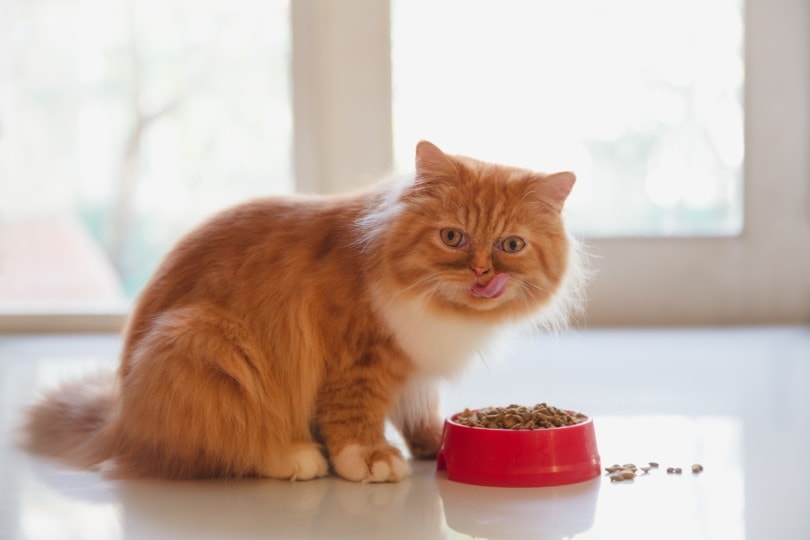
4. Eye Disorders
| Signs | Squinting, eye discharge, blindness |
| Possible treatments | Medication, surgery |
Because of their flat faces, the Persian’s eyes bulge further out of their head than other breeds. The abnormal shape of their skull plus some genetic issues puts them at risk of various eye problems. Eye disorders were the second most commonly seen issue among the Persians from the U.K. study.
Persians are prone to specific eye conditions, including entropion when their eyelids roll inward and their eyelashes irritate the eye. They are also prone to corneal ulcers, which are injuries to the eye’s surface, and corneal sequestrum. Many Persians have problems with their tear ducts, causing excessive tearing and eye stains. Persians can also suffer from cataracts and progressive retinal atrophy. Most eye problems are diagnosed with an exam and specific tests, possibly by a veterinary eye specialist. Treatment varies depending on which problem is found.
5. Dental Disease
| Signs | Bad breath, trouble eating, bleeding gums |
| Possible treatments | Home cleaning and vet dental care |
The shape of the Persian’s face also makes them more prone to dental issues. Sometimes, Persians have trouble getting food into their mouths because their face is so flat. Persians often have issues with their teeth crowding too close together and abnormal numbers of teeth. All of these structural problems can make the teeth more prone to building tartar.
Bad breath can be one of the first signs of dental disease, and it should never be overlooked. Feline dental disease is a major cause of discomfort to cats and impacts their quality of life severely. The best way to prevent oral problems is to regularly remove plaque buildup by brushing your cat’s teeth.
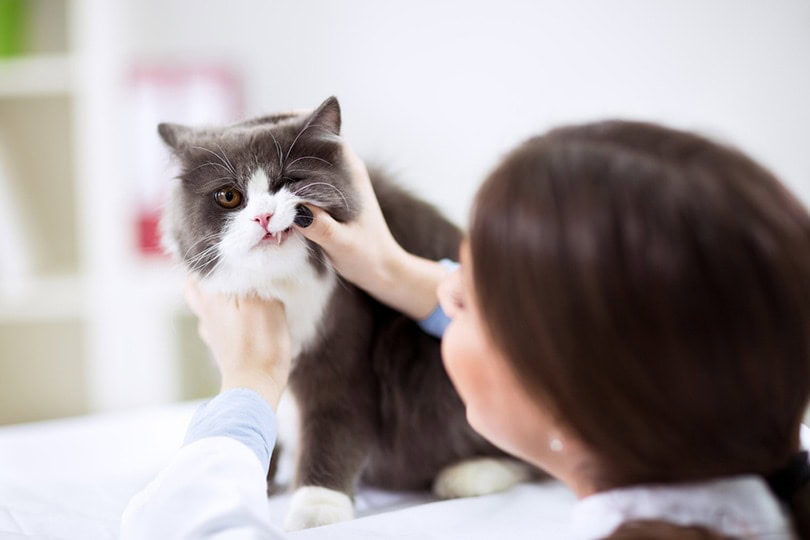
6. Skin Disease
| Signs | Itching, hair loss, skin lesions |
| Possible treatments | Medications, medicated baths |
In the U.K. study, skin and haircoat issues were the most commonly reported ailment among the Persians studied. Specific genetic mutations make Persians more prone to getting ringworm, a fungal disease. They are also more at risk for skin diseases because of their long, thick fur.
Most skin diseases, including ringworm, are diagnosed by specific laboratory tests. While skin diseases are generally treatable, they can be long and frustrating. To complicate matters, Persians can pass ringworm to their humans, a particularly itchy and uncomfortable gift.
7. Trouble Giving Birth (Dystocia)
| Signs | Vocalizing, unproductive labor |
| Possible treatments | C-section |
According to the U.K. study, Persians have a high incidence of a labor complication called dystocia, when the kitten becomes stuck in the birth canal. This occurs more often in Persians because their heads are extra-large and their hips are narrow. Unfortunately, this combination does not make for a smooth birthing process. If the kittens can’t come out the normal way, the pregnant Persian may need to have a C-section. Sadly, the study also found that Persians have the highest rate of losing kittens of any purebred cat, at 25%.
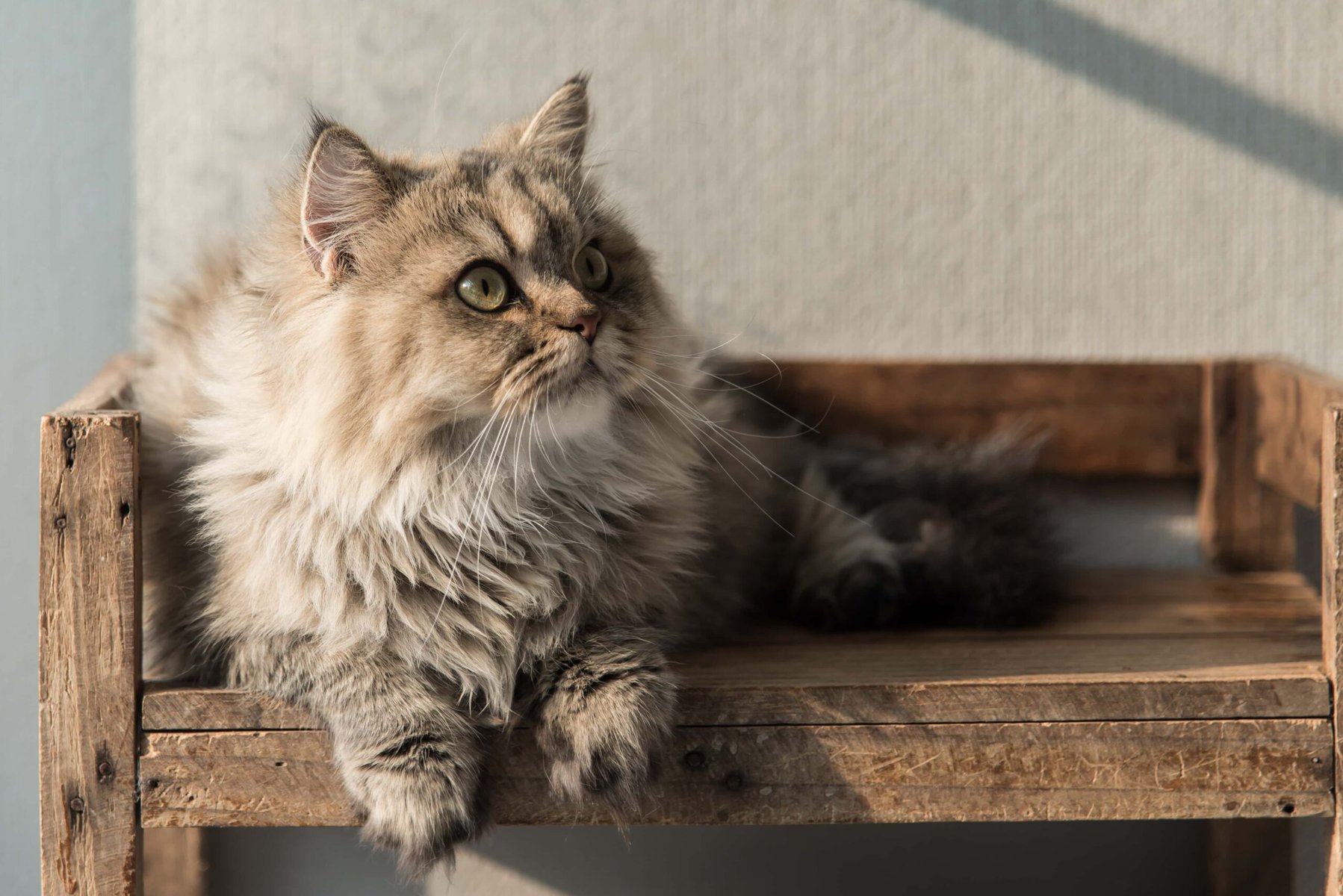

How to Keep Your Persian Cat Healthy
As we’ve learned, Persians can suffer from a variety of health problems, and some of these medical conditions can’t be cured but managed. The best way to keep your Persian healthy is to ensure you’re buying from a responsible breeder and prevent or detect these conditions as early as possible. But how do you do that? Let’s go over the preventative recommendations for your Persian cat.
Start With the Healthiest Kitten Possible
As we mentioned, a blood test can detect the PKD gene. Cats can carry the gene and pass it on without ever showing signs themselves. Before buying a Persian kitten, ask if both parents have been tested and certified free of the PKD gene. It only takes one parent being a carrier to pass it on, so both males and females should be tested before breeding.
The flat face of the Persian is problematic, but it’s also part of their breed standard, so there’s nothing you can do about that, right?
Actually, not all flat faces are created equal. Different breeding lines of Persians have flatter faces and, therefore, more issues. Classic or Doll-Faced Persians seem least impacted. If possible, look for a kitten of one of those types.
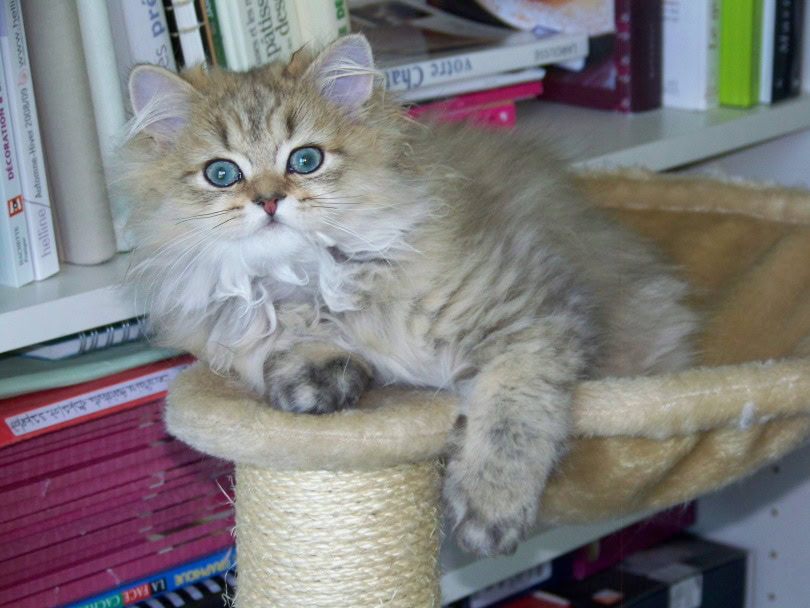
Keep Up With Preventative Care
As your kitten grows, make sure you are diligent about their yearly vet visits and preventative care. As mentioned, many of these health concerns are easier to treat if caught early. Obviously, if you notice any worrisome signs between regularly scheduled appointments, see the vet sooner.
Sometimes, your vet may suggest extra screenings for your Persian. For example, to detect HCM early, your vet may offer yearly echocardiograms or visits with a veterinary heart specialist.
Keep Your Cat at a Healthy Weight
Obesity is unhealthy for any cat, but for a Persian with BOAS, it can be life-threatening. Help your cat breathe easier by keeping them trim and fit. A vet can help you calculate how many calories your Persian should be eating each day. They can also assist you in choosing healthy cat food to feed.
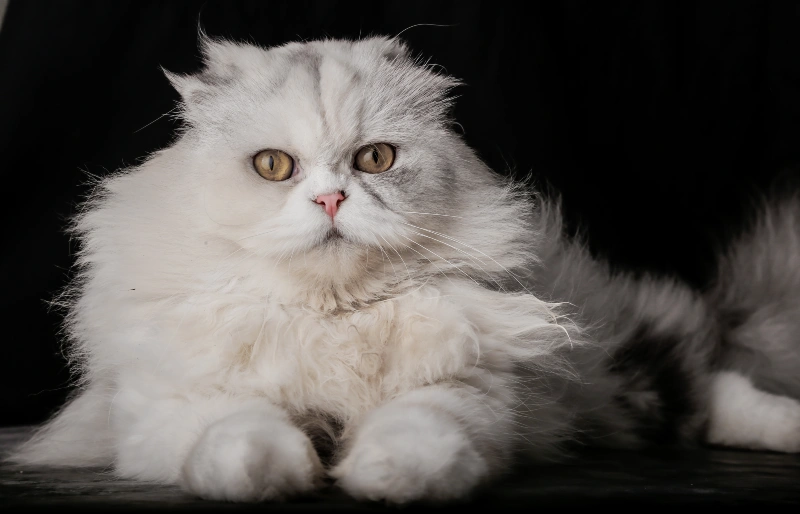

Conclusion
That same flat face that causes the Persian so many problems is also one of their most adorable features. When combined with their sweet, mellow temperaments, it’s no wonder that Persians are consistently as popular as they are around the world. If you’re considering getting a Persian, it’s important to educate yourself about the issues you could be facing and try to get them pet insurance. Hopefully, our list of common health concerns for Persians was helpful to you during that process.
- https://vcahospitals.com/know-your-pet/lacrimal-duct-obstruction-in-cats#:~:text=The%20signs%20of%20nasolacrimal%20duct,and%2For%20hair%20loss.%22
- https://vcahospitals.com/know-your-pet/dental-disease-in-cats
- https://vcahospitals.com/know-your-pet/brachycephalic-airway-syndrome-in-cats#:~:text=Severely%20affected%20cats%20have%20more,in%20hot%20or%20humid%20weather.
- https://www.vet.cornell.edu/departments-centers-and-institutes/cornell-feline-health-center/health-information/feline-health-topics/hypertrophic-cardiomyopathy
- https://vcahospitals.com/know-your-pet/kidney-disease-polycystic-kidney-disease-in-cats
- https://www.petmd.com/cat/conditions/eyes/c_ct_entropion
- https://vcahospitals.com/know-your-pet/corneal-ulcers-in-cats
- https://www.vet.cornell.edu/departments-centers-and-institutes/cornell-feline-health-center/health-information/feline-health-topics/ringworm-serious-readily-treatable-affliction#:~:text=The%20clearest%20and%20most%20common,or%20nail%20beds%2C%20and%20dandr
- https://www.petmd.com/cat/conditions/reproductive/c_ct_dystocia
Featured Image Credit: choosangyeon, Shutterstock
Contents
- The 7 Most Common Persian Cat Health Problems:
- 1. Brachycephalic Obstructive Airway Syndrome (BOAS)
- 2. Hypertrophic Cardiomyopathy
- 3. Polycystic Kidney Disease
- 4. Eye Disorders
- 5. Dental Disease
- 6. Skin Disease
- 7. Trouble Giving Birth (Dystocia)
- How to Keep Your Persian Cat Healthy
- Start With the Healthiest Kitten Possible
- Keep Up With Preventative Care
- Keep Your Cat at a Healthy Weight
- Conclusion
